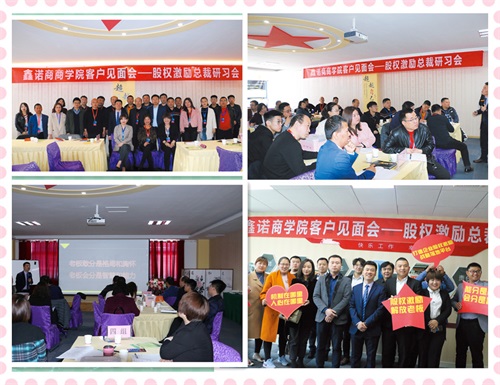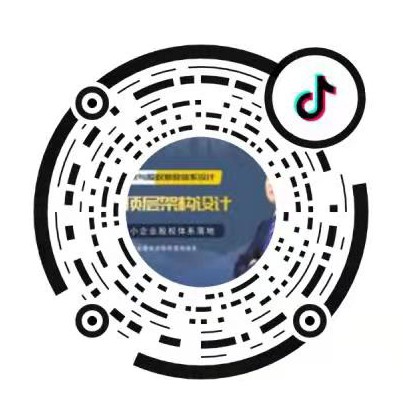Shandong Equity Incentive Training Course: How to Use Equity Incentive to Comfort Old Employees?
1.打破老員工原有的慣性思維,,重塑老員工的價(jià)值追求,。
1. Break the old employees' habitual thinking and reshape their value pursuit.
從老員工的價(jià)值追求是否與企業(yè)的價(jià)值追求一致入手,首先明確或重塑公司愿景,、目標(biāo),、使命,讓其看到公司未來(lái)的價(jià)值與發(fā)展前景,,看到自己所做工作的意義,,給市場(chǎng)給客戶給企業(yè)創(chuàng)造價(jià)值,讓老員工樹立責(zé)任感,、使命感,、以及期待目標(biāo)實(shí)現(xiàn)之后的成就感。
Starting from whether the value pursuit of senior employees is consistent with the value pursuit of the enterprise, the first step is to clarify or reshape the company's vision, goals, and mission, so that they can see the future value and development prospects of the company, see the significance of their work, create value for the market, customers, and the enterprise, and establish a sense of responsibility, mission, and a sense of achievement after the expected goals are achieved.
2.分解公司戰(zhàn)略規(guī)劃與目標(biāo),,層層到具體每個(gè)崗位,。
2. Decompose the company's strategic plan and goals, layer by layer, to each specific position.
讓企業(yè)的發(fā)展與老員工的工作對(duì)接,讓企業(yè)從員工層面有新的追求目標(biāo),,尤其是每一個(gè)核心人員,,給其確定目標(biāo),確定責(zé),、權(quán),、利,使其產(chǎn)生挑戰(zhàn)的動(dòng)力,。
Align the development of the enterprise with the work of old employees, and enable the enterprise to have new pursuit goals at the employee level, especially for each core personnel. Set goals, responsibilities, rights, and interests for them, and create motivation for them to challenge.
3.關(guān)鍵一點(diǎn),,老員工的激勵(lì)方案包含歷史部分。
3. Crucially, the incentive plan for senior employees includes a historical section.
股權(quán)激勵(lì)針對(duì)的是未來(lái)價(jià)值創(chuàng)造,,不強(qiáng)調(diào)過(guò)去的價(jià)值創(chuàng)造的激勵(lì),,但對(duì)老員工來(lái)說(shuō),歷史貢獻(xiàn)與未來(lái)的價(jià)值創(chuàng)造要合理綜合體現(xiàn),。很多企業(yè)在激勵(lì)方案設(shè)計(jì)中,,往往忽略老員工的歷史貢獻(xiàn)價(jià)值,這是很多企業(yè)老員工在頒布股權(quán)激勵(lì)方案后時(shí)有怨言,,實(shí)施了股權(quán)激勵(lì)后工作積極性反而下降的源頭,。
Equity incentives are aimed at future value creation and do not emphasize incentives for past value creation. However, for senior employees, historical contributions and future value creation should be reasonably and comprehensively reflected. Many companies often overlook the historical contribution value of their senior employees in the design of incentive plans, which is the source of complaints from many senior employees after issuing equity incentive plans, and the decrease in work enthusiasm after implementing equity incentives.

4.學(xué)會(huì)傾聽老員工的心聲,。
4. Learn to listen to the voices of old employees.
很多老員工對(duì)企業(yè)及有關(guān)政策都有自己的想法,要多與老員工溝通,、傾聽他們的心聲,,其實(shí)一個(gè)老員工怕的就是企業(yè)發(fā)展后,沒有人關(guān)注他人,,沒人關(guān)心他們,。只有真正了解了他們的想法,才能真正找到解決問(wèn)題的佳切合點(diǎn),。
Many old employees have their own ideas about the company and related policies. It is important to communicate with them and listen to their voices. In fact, what an old employee is afraid of is that after the company develops, no one pays attention to others or cares about them. Only by truly understanding their ideas can we truly find the best fit to solve the problem.
5.老員工的激勵(lì)方案包含歷史部分,。
5. The incentive plan for senior employees includes a historical section.
股權(quán)激勵(lì)針對(duì)的是未來(lái)價(jià)值創(chuàng)造,不強(qiáng)調(diào)過(guò)去的價(jià)值創(chuàng)造的激勵(lì),,但對(duì)老員工來(lái)說(shuō),,歷史貢獻(xiàn)與未來(lái)的價(jià)值創(chuàng)造要合理綜合體現(xiàn)。很多企業(yè)在激勵(lì)方案設(shè)計(jì)中,,往往忽略老員工的歷史貢獻(xiàn)價(jià)值,,這是很多企業(yè)老員工在頒布股權(quán)激勵(lì)方案后時(shí)有怨言,實(shí)施了股權(quán)激勵(lì)后工作積極性反而下降的源頭,。
Equity incentives are aimed at future value creation and do not emphasize incentives for past value creation. However, for senior employees, historical contributions and future value creation should be reasonably and comprehensively reflected. Many companies often overlook the historical contribution value of their senior employees in the design of incentive plans, which is the source of complaints from many senior employees after issuing equity incentive plans, and the decrease in work enthusiasm after implementing equity incentives.
所以,,在具體的股權(quán)激勵(lì)方案設(shè)計(jì)時(shí),對(duì)于一些準(zhǔn)備離(退)崗的重大貢獻(xiàn)老員工,,將其歷史上給企業(yè)的奉獻(xiàn),,折算成一定份額的虛擬股權(quán)(歷史貢獻(xiàn)股),給予獎(jiǎng)勵(lì)與肯定,。對(duì)很多離(退)崗的老員工來(lái)說(shuō),,這份歷史貢獻(xiàn)股的肯定價(jià)值更大,老員工更在意企業(yè)或創(chuàng)始人對(duì)其過(guò)去的肯定,,而不僅僅是得到的股份的收入獎(jiǎng)勵(lì),。
Therefore, in the design of specific equity incentive plans, for some significant contributing old employees who are preparing to leave (retire), their historical contributions to the enterprise will be converted into a certain share of virtual equity (historical contribution shares), and rewards and recognition will be given. For many retired employees, the positive value of this historical contribution stock is greater. Older employees are more concerned about the recognition of their past by the company or founder, rather than just receiving income rewards from the stock.
對(duì)于繼續(xù)在崗的老員工,可以同其他新員工一樣被看待,,按條件納入激勵(lì)對(duì)象范疇,,但方案設(shè)計(jì)中要體現(xiàn)有歷史貢獻(xiàn)因素。更多相關(guān)股權(quán)的事項(xiàng)就來(lái)我們網(wǎng)站
http://nequ.com.cn咨詢,!
For old employees who continue to work, they can be treated like other new employees and included in the scope of incentive targets according to conditions, but the design of the plan should reflect historical contribution factors. For more equity related matters, come to our website http://nequ.com.cn consulting service



 13698613138
13698613138


